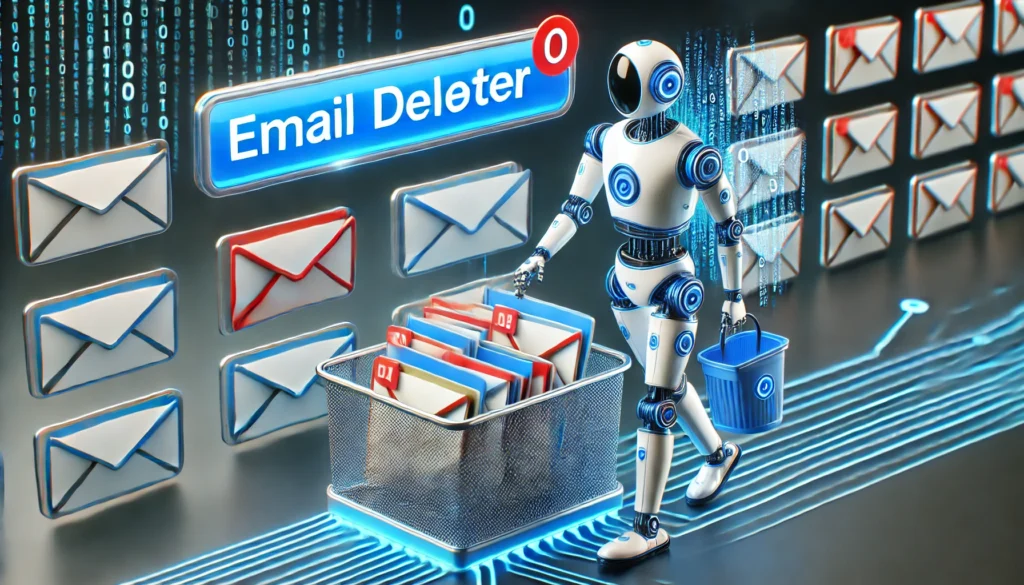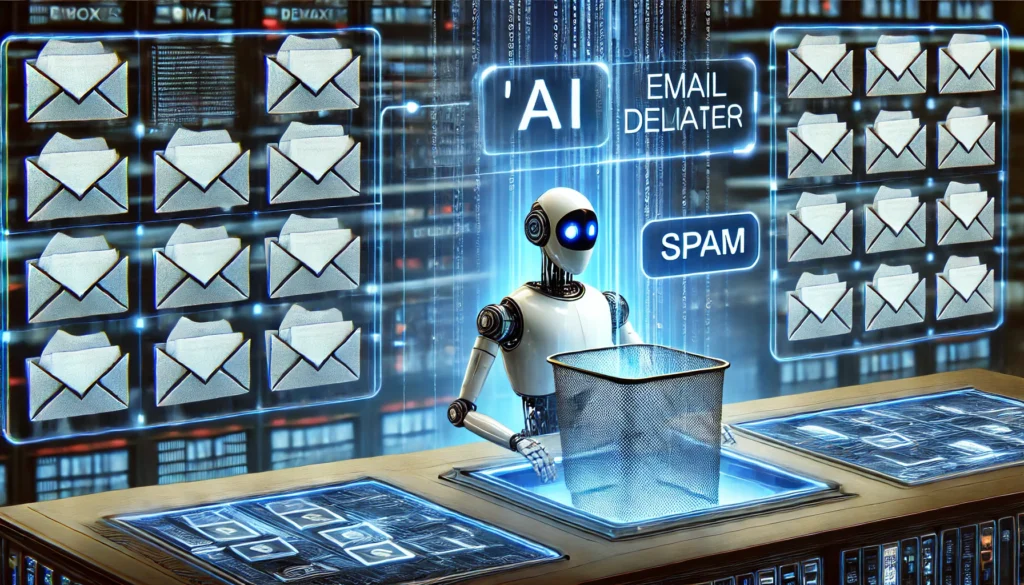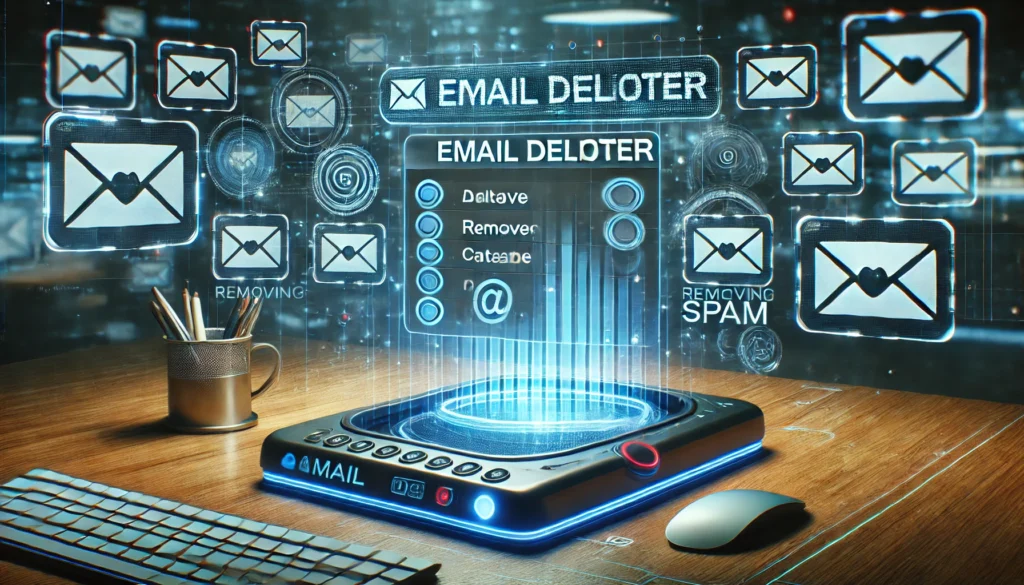In the digital age, managing multiple email addresses has become an essential skill for professionals across various fields. Whether you’re a health and wellness coach seeking to separate client communications from personal correspondence, a science journalist managing different sources, or a biohacker organizing research and newsletters, having multiple email addresses can streamline your digital life. This article will guide you through the process of setting up multiple email addresses, focusing primarily on Gmail, while providing practical tips and insights to optimize this setup for efficiency and clarity.
You may also like: Top Email Deleters for Inbox Management
Understanding the Need for Multiple Email Addresses
The benefits of maintaining separate email addresses are manifold. From enhanced organization to increased security, multiple email addresses allow for a compartmentalized approach to digital communication. This is particularly valuable in fields like health and wellness, where confidentiality and professionalism are paramount.
Organizational Advantages
Having separate email addresses for different aspects of your life—personal, professional, subscriptions, etc.—can significantly reduce clutter and improve focus. For instance, a health and wellness coach might have one email for client interactions, another for business communications, and yet another for personal use. This separation allows for better time management, as you can designate specific times to check each account based on your priorities.
Furthermore, with dedicated email addresses, you can easily prioritize responses. Work-related emails can take precedence during business hours, while personal emails can be reserved for leisure time. This differentiation helps in maintaining a healthy work-life balance, a crucial aspect in today’s fast-paced world.
Having clearly defined email addresses also aids in categorizing information. Subscriptions can be directed to one account to avoid cluttering your primary inbox. This approach ensures that important emails are not buried under newsletters or promotional content.
Enhanced Security
Each email address serves as an additional layer of security. By having a distinct email for sensitive accounts, you can mitigate the risk of a security breach affecting all aspects of your digital presence. This is crucial for biohackers and others engaged in cutting-edge research where data sensitivity is high. In the event of a compromise, only one segment of your digital life is affected, minimizing potential damage.
Security can be further enhanced by using different passwords for each email account. This reduces the risk of cascading security breaches. Implementing two-factor authentication (2FA) adds another layer of protection, ensuring that even if your password is compromised, unauthorized access remains unlikely.
Another benefit is the ability to track potential data leaks. By using unique email addresses for different services, you can identify which platform may have experienced a security breach if you start receiving spam or phishing emails targeted to a specific address.

Professionalism and Confidentiality
Maintaining separate email addresses can enhance professionalism, especially in fields where confidentiality is crucial. For instance, a science journalist might use one email address for communicating with editors and another for interacting with sources. This separation reassures sources that their communications are handled discreetly and professionally.
In the health and wellness sector, client confidentiality is paramount. A dedicated email address for client interactions ensures that sensitive information is not mixed with less secure or casual correspondence. This practice not only protects client data but also builds trust in professional relationships.
Moreover, having distinct email addresses for professional and personal use can help uphold boundaries. Professional communications remain formal, while personal emails can be more relaxed, maintaining the appropriate tone for each context.
How to Create Multiple Emails in Gmail
Gmail, with its robust features and user-friendly interface, is a preferred choice for many when it comes to managing multiple email addresses. Below, we explore the step-by-step process of setting up multiple Gmail accounts.
Setting Up Your First Gmail Account
If you don’t already have a Gmail account, the first step is to create one. Visit the https://mail.google.com, click on “Create account,” and fill out the required fields. This process includes entering your name, selecting a username, and choosing a strong password. Once you’ve set up your initial account, you can easily create additional ones by following a similar process.
It is advisable to create a secure password, combining uppercase and lowercase letters, numbers, and symbols. This helps in safeguarding your account from unauthorized access. Also, keep your recovery options updated by adding a recovery email and phone number to assist in account recovery if necessary.
Once your account is created, familiarize yourself with Gmail’s interface. Explore settings and features such as filters, labels, and security options to customize your email experience according to your needs.
Creating Additional Gmail Addresses
To create additional Gmail addresses, you can repeat the process of creating a new account. However, Gmail also offers a unique feature that allows for the creation of multiple email addresses from a single account through aliasing. This method is efficient for managing different email streams without the hassle of logging into multiple accounts.
When setting up additional accounts, consider using variations of your existing email address. This could involve adding numbers or initials to your name. For example, if your primary email is johnsmith@gmail.com, consider johnsmith.work@gmail.com for professional use.
Another efficient way is to use Gmail’s alias feature. By adding a ‘+’ sign and a keyword to your existing email address, you create a new alias. For example, if your email is myemail@gmail.com, you can use myemail+work@gmail.com for work-related emails and myemail+personal@gmail.com for personal correspondence. This enables you to filter and label emails based on the alias used.
Using Aliases for Multiple Email Addresses
Gmail aliases offer a simple way to manage various email addresses without the need for multiple accounts. By using the ‘+’ sign and a keyword in your email address, you create distinct aliases for different purposes. This feature is particularly useful for segmenting incoming emails without setting up entirely new accounts.
Aliases allow you to streamline your inbox by creating filters. For instance, emails sent to myemail+newsletters@gmail.com can automatically be labeled and sorted into a “Newsletters” folder. This organization keeps your main inbox clutter-free and ensures important emails aren’t overlooked.
Additionally, aliases can be used for temporary purposes, such as signing up for events or trials, minimizing the long-term impact on your primary inbox. If spam starts to accumulate, you can easily filter or block emails sent to that specific alias.

Managing Multiple Accounts
Once you have multiple Gmail accounts or aliases, managing them effectively is key. Gmail allows you to link accounts, enabling you to switch between them with ease. This feature is especially beneficial for professionals who need to access different email streams throughout the day.
To manage multiple accounts, consider using Gmail’s “Add account” feature. This allows you to add various accounts to your Gmail app or browser, facilitating seamless transitions between them. Keeping accounts organized with distinct color-coded labels can also aid in quick navigation.
Additionally, you can consolidate emails from various accounts into one inbox using Gmail’s “Check mail from other accounts” feature. This approach is convenient for those who prefer managing emails from a single interface. By setting up forwarding rules, emails from secondary accounts can be automatically sent to your primary inbox, ensuring you never miss an important message.
Tips for Optimizing Multiple Email Addresses
Having multiple email addresses is just the beginning. To truly benefit from this setup, it’s important to implement strategies that enhance efficiency and organization.
Labeling and Filtering
Gmail’s labeling and filtering features are powerful tools for maintaining organization. By setting up filters, you can automatically label, archive, delete, or forward emails based on specific criteria. For example, you could create a filter to label all emails sent to your +work alias as “Work” for easy identification.
Labels act as virtual folders, allowing you to categorize emails without moving them from your inbox. Create labels for different projects, clients, or interests, and apply them to relevant emails. This systematization enables quick retrieval of emails when needed.
Filters automate your email management by processing incoming messages according to predefined rules. For instance, emails containing the word “invoice” can be automatically labeled as “Finance” and marked as important. This reduces manual sorting, saving time and reducing the risk of overlooking crucial emails.
Using the Gmail App
The Gmail app allows you to manage multiple email accounts on the go. With its unified inbox feature, you can view emails from all your accounts in a single view, making it easier to stay on top of communications without switching between accounts. This is particularly useful for professionals who travel frequently and need quick access to their emails.
Customizing notifications for each account helps in prioritizing responses. You can set alerts for work emails while keeping personal notifications silent during office hours. This ensures that you remain focused on pressing matters without unnecessary distractions.
Moreover, the app offers offline capabilities, allowing you to read and draft emails even without an internet connection. This feature is beneficial in areas with limited connectivity, ensuring you remain productive regardless of your location.
Regular Maintenance
Periodically reviewing and cleaning up your email accounts can prevent clutter and ensure that important messages aren’t lost in the shuffle. This includes archiving old emails, updating filters, and unsubscribing from unnecessary newsletters. Regular maintenance keeps your inbox organized and enhances overall productivity.
Archiving emails you no longer need immediate access to but want to keep for reference can free up space in your inbox. This practice helps in maintaining a clean and efficient email environment.
Updating filters and labels ensures they remain relevant to your current needs. As your projects and responsibilities evolve, adjusting these settings keeps your email management aligned with your workflow.
Unsubscribing from outdated newsletters or promotional emails reduces the volume of incoming messages. Use tools like Unroll.Me to streamline this process and regain control over your inbox.
Future Implications of Managing Multiple Emails
As technology continues to evolve, the way we manage our digital communications will likely change. However, the fundamental need for organization, security, and efficiency will remain constant. The skills and strategies you develop today in managing multiple email addresses will continue to serve you well into the future.
Adapting to Technological Advances
With the advent of artificial intelligence and machine learning, email management tools are becoming more sophisticated. These technologies can automatically sort and prioritize emails based on your preferences and past behaviors. Staying informed about these advancements will enable you to leverage new tools to enhance your email management strategies.
Future developments may also include integrated communication platforms that combine email, messaging, and collaboration tools in one interface. This convergence will require adaptability and a willingness to learn new systems to maintain efficient communication.
Moreover, as cybersecurity threats evolve, staying updated on the latest security practices will be crucial. Implementing advanced security measures and regularly updating your knowledge will help protect your email accounts from emerging threats.
Continual Optimization
The key to effective email management lies in continuous adaptation and optimization. Regularly reviewing your email setup and making necessary adjustments ensures your system remains efficient and aligned with your evolving needs. This proactive approach prevents stagnation and fosters ongoing improvement.
Experimenting with different email management tools and techniques can reveal new efficiencies. Whether it’s trying a new email client, adopting a new organizational method, or exploring automation tools, continual experimentation leads to better outcomes.
Additionally, learning from peers and industry leaders can provide valuable insights. Engaging with communities and forums dedicated to email management can introduce you to best practices and innovative solutions.

Embracing Change
Embracing change is essential in the ever-evolving digital landscape. As new technologies and trends emerge, being open to change will enable you to harness these innovations for improved email management. This mindset fosters resilience and ensures you remain agile in adapting to future challenges.
By staying curious and open-minded, you can anticipate and respond effectively to changes in the digital communication environment. This proactive stance positions you to take advantage of new opportunities and enhances your overall digital literacy.
In conclusion, setting up and managing multiple email addresses is a valuable skill that offers numerous benefits, from improved organization to enhanced security. By leveraging Gmail’s features and implementing strategic practices, you can optimize your email management to support your personal and professional endeavors. Whether you’re a health and wellness coach, a science journalist, or a biohacker, these tips will help you navigate the digital landscape with ease and confidence. Remember, the key to effective email management lies in continuous adaptation and optimization. Stay informed about new features and best practices to ensure that your email setup remains efficient and aligned with your evolving needs.
Further Reading:
How to Add a Second Gmail Account (A Step-by-Step Guide)
How to Create Multiple Email Addresses from One Gmail Account
How To Add Multiple Emails in Outlook in 2024
Important Note: The information contained in this article is for general informational purposes only, and should not be construed as health or medical advice, nor is it intended to diagnose, prevent, treat, or cure any disease or health condition. Before embarking on any diet, fitness regimen, or program of nutritional supplementation, it is advisable to consult your healthcare professional in order to determine its safety and probable efficacy in terms of your individual state of health.
Regarding Nutritional Supplements Or Other Non-Prescription Health Products: If any nutritional supplements or other non-prescription health products are mentioned in the foregoing article, any claims or statements made about them have not been evaluated by the U.S. Food and Drug Administration, and such nutritional supplements or other health products are not intended to diagnose, treat, cure, or prevent any disease.


